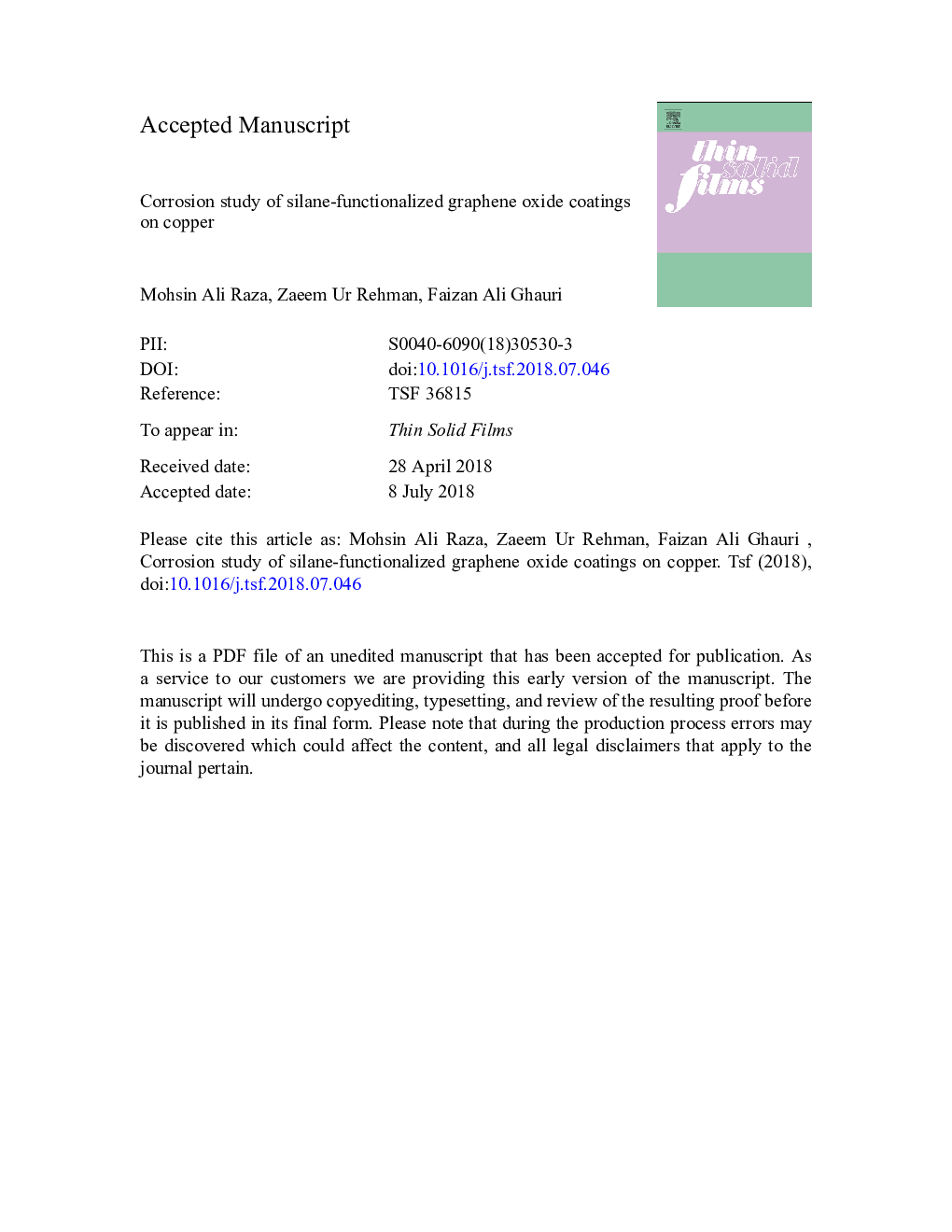| Article ID | Journal | Published Year | Pages | File Type |
|---|---|---|---|---|
| 8032435 | Thin Solid Films | 2018 | 26 Pages |
Abstract
This research work aims to produce corrosion resistant silane-functionalized graphene oxide (GO) coatings on copper (Cu) metal. Two types of precursor graphite (flakes and powder) were utilized to synthesize GO following improved Hummers' method, and resulting GO was labelled as FGO and PGO, respectively. GO was deposited on copper metal, which was made anode and platinum was made cathode, from GO/water suspension by electrophoretic deposition (EPD). Silane functionalization was performed by immersing GO-coated samples in 3-aminopropyltriethoxy silane solution. The role of precursor graphite and post-coating treatment of GO coating with silane on corrosion protection ability of GO coatings was studied. Optimum EPD parameters for the development of uniform coatings were found to be 5â¯V and 30â¯s with GO/water concentration of 2:1. Characterization of GO and silane-functionalizedGO coatings was performed by atomic force microscopy, Fourier transform infrared spectroscopy and Raman spectroscopy. Corrosion behavior of GO and silane-functionalizedGO-coated Cu samples was studied by Tafel analysis, electrochemical impedance spectroscopy (EIS) and cyclic voltammetry (CV) in 3.5% NaCl solution. The results showed that precursor graphite effects quality of GO, and consequently the corrosion behavior of the GO coatings. PGO-coated Cu showed better corrosion protection compared to FGO-coated Cu as determined by Tafel analysis. Tafel analysis showed that PGO coating and silane-functionalizedPGO coating developed at optimized parameters enhanced corrosion resistance of Cu by ca. 3.45à and 23Ã, respectively, compared to bare Cu. Tafel results were well validated by EIS and CV.
Related Topics
Physical Sciences and Engineering
Materials Science
Nanotechnology
Authors
Mohsin Ali Raza, Zaeem Ur Rehman, Faizan Ali Ghauri,
